We start the week with the following stories...
Be safe out there!
Tom
A Canaryfly plane suffers a front-end failure before takeoff in Gando.
The aircraft suffered a failure that caused the nose to touch the runway.
TELDE CURRENT NEWS/Telde
An ATR aircraft belonging to the airline Canaryfly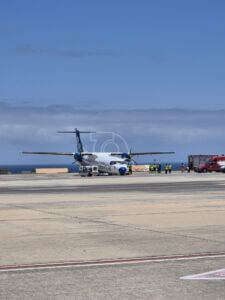 suffered a mechanical incident at Gando Airport (Gran Canaria) this Sunday at around 2:00 p.m., following what may have been a failure in the nose gear. The aircraft, with passengers on board and ready for takeoff, ended up tilted with its nose resting on the runway, triggering emergency protocols. There is no official information yet on any injuries or personal damage.
suffered a mechanical incident at Gando Airport (Gran Canaria) this Sunday at around 2:00 p.m., following what may have been a failure in the nose gear. The aircraft, with passengers on board and ready for takeoff, ended up tilted with its nose resting on the runway, triggering emergency protocols. There is no official information yet on any injuries or personal damage.
The incident occurred on the aircraft parking apron at Gran Canaria Airport, as the Canaryfly plane was preparing to begin takeoff maneuvers. Eyewitnesses told TELDEACTUALIDAD that the front landing gear collapsed, causing the aircraft to come to rest on its front fuselage.
The sight of the plane tilted forward on the runway was a huge shock to those in the area, and emergency protocols were immediately activated. Specialized teams from the airfield quickly arrived to address the situation, secure the aircraft, and check on the occupants.
Although the airline has yet to issue an official statement, preliminary information suggests that the passengers were already on board the plane at the time of the incident. It is currently unknown whether any of them were injured or if any further damage was caused.
Canaryfly, which operates inter-island flights between the islands of the archipelago, is one of the main short-haul airlines in the Canary Islands. AENA and the airline itself expect an official version of events in the coming hours, clarifying the exact causes of the technical failure.
The company regrets the incident and assures that it caused no injuries.
In a statement sent to TELDEACTUALIDAD at 4:52 p.m., Canaryfly reports that, this afternoon, an ATR 72 model aircraft in its fleet experienced a temporary technical failure at Gran Canaria Airport, without this incident causing personal injury to either passengers or crew.
The incident occurred when the plane was parked on the airport apron , with boarding already complete and all passengers on board. As the aircraft began its start-up maneuver prior to taxiing to the runway, the front landing gear gave way, causing the aircraft to come to rest on its nose.
The company's established safety protocols for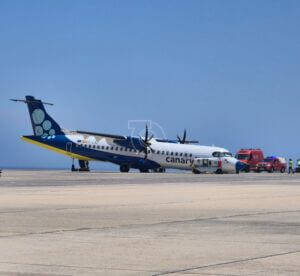 these types of situations were immediately activated, in coordination with airport services and the relevant authorities. The passengers were safely evacuated and subsequently relocated to other flights operated by the company.
these types of situations were immediately activated, in coordination with airport services and the relevant authorities. The passengers were safely evacuated and subsequently relocated to other flights operated by the company.
The incident may also have caused occasional delays in other operations, for which Canaryfly deeply regrets the inconvenience caused to the affected passengers and appreciates their understanding.
The company has already initiated an internal technical investigation into the causes of the failure, in collaboration with the relevant aviation authorities, and reiterates its firm commitment to aviation safety, which is the core value of its daily operations.
Canaryfly wishes to emphasize that this was an isolated incident and was managed in accordance with the strictest protocols, and that the safety and well-being of its passengers and staff are always its priority.
https://teldeactualidad.com/art/173329/un-avion-de-canaryfly-sufre-un-fallo-en-el-tren-delantero-antes-de-despegar-en-gando
Passing motorists rescue pilot from fiery helicopter crash near London
“They saved a life today, no question," an OPP officer said of two people who pulled a trapped Bracebridge pilot from the flaming wreckage.
By Jonathan Juha
Police are crediting two motorists with saving the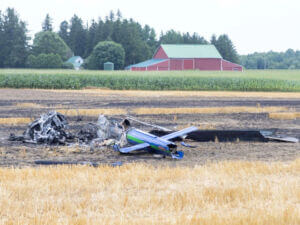 life of a pilot trapped in the fiery wreckage of a crop-dusting helicopter that crashed Friday in a wheat field northeast of London.
life of a pilot trapped in the fiery wreckage of a crop-dusting helicopter that crashed Friday in a wheat field northeast of London.
The quick-thinking passers-by were travelling along Cobble Hills Road, south of Thorndale Road, about 12:30 p.m. when they spotted the chopper, which had been spraying the field, crash near Thorndale in Thames Centre.
“There was a lone male pilot, and he was extricated by two good Samaritans while the helicopter was still on fire. They pulled him out,” said OPP Sgt. Ryan Griffith.
“They saved a life today, no question about it.”
The 21-year-old pilot from Bracebridge was flown to Victoria Hospital in London with what police described as non-life-threatening injuries.
Griffith said the cause of the crash is unknown and is now under investigation.
The wreckage of the small, blue and green helicopter was still visible late Friday afternoon at the site of the crash, over which police remained in control until members of the Transportation Safety Board of Canada, which investigates aircraft crashes, could begin an investigation.
A portion of the field surrounding the wreckage was burned as winds whipped the fire caused by the crash into the field.
Besides the Ontario Provincial Police, fire departments from Thames Centre and Zorra Township responded to the crash, police said.
“Thankfully, everybody was okay,” Griffith said.
But “things would have been much, much worse, if (those people) hadn’t have come to (the pilot’s) aid. He was trapped in the helicopter and they were able to free him as the helicopter was on fire,” he said.
Police asked the public to avoid the area.
The chopper crash occurred in the same area of the rural municipality where a Walkerton school teacher-coach and four teenagers were killed in a vehicle crash in May, at the intersection of Cobble Hills Road and Thorndale Road, as they headed home from a sports tournament.
With files by Beatriz Baleeiro
https://lfpress.com/news/local-news/helicopter-crashes-near-london-bracebridge-pilot-hospitalized
Man dies after plane crashes near Maplewood Park
Kiley Wren and Kristi Blake News10NBC
ROCHESTER, N.Y. — A man has died after police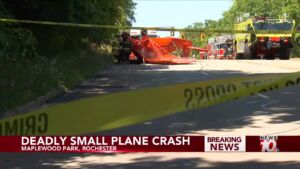 say a single engine plane crashed on Bridge View Drive near Maplewood Park.
say a single engine plane crashed on Bridge View Drive near Maplewood Park.
Capt. Greg Bello from the Rochester Police department says at around 1:30 p.m. Friday, they responded to Bridge View Drive for the crash.
He says two people were on the plane, and the man was declared dead at the scene. The second man was brought to the hospital for non-life threatening injuries.
The Rochester Fire Department was also at the crash site, where they took the people out of the plane. Lt. Jackie Sierra says there was also a fuel leak that was mitigated by a hazmat team.
Two witnesses who saw the plane go down say they have never seen anything like that before and never want to again. Bello also says he has never seen a plane crash within the city in his 18 years on the force.
Bello says they are waiting for the National Transportation Safety Board (NTSB) and Federal Aviation Administration (FAA) to continue the investigation.
NTSB and the FAA have identified the plane as a “Piper J5 Cub Cruiser.” The NTSB says one of their investigators will head to the site Saturday to document the scene and examine the aircraft.
Bridge View Drive will be closed during the investigation. Police say there is no timeframe for when it will reopen.
https://www.whec.com/top-news/rpd-plane-crashes-near-maplewood-park/
Plane crosses 5th Avenue in Anchorage
By Joey Klecka
ANCHORAGE, Alaska (KTUU) - A small plane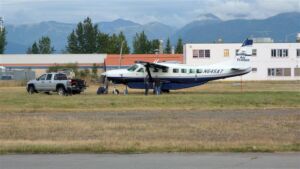 crossed Fifth Avenue in Anchorage on Friday after leaving the runway at Merrill Field.
crossed Fifth Avenue in Anchorage on Friday after leaving the runway at Merrill Field.
Dashcam video obtained by Alaska’s News Source shows a propeller-driven Alaska Air Transit plane leaving the runway at Merrill Field that runs adjacent to Fifth Avenue and crossing the road. It does not appear to collide with any vehicles.
Data publicly available on FlightRadar shows an Alaska Air Transit plane landing at Merrill Field shortly before 4 p.m. The company provides flight service to Tatitlek around that time, something that the flight data shows.
An operations dispatch employee at Alaska Air Transit confirmed to Alaska’s News Source that a “situation” had occurred but declined further comment.
https://www.alaskasnewssource.com/2025/08/02/video-plane-crosses-5th-avenue-anchorage/
No injuries reported following small plane crash in Ellsworth
By WABI News DeskPublished: Aug. 2, 2025 at 3:50 AM EDT
ELLSWORTH, Maine (WABI) - A pilot and his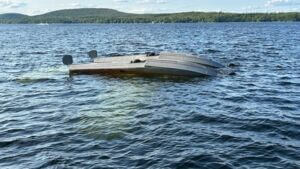 passenger are safe after their plane flipped during a landing in Ellsworth on Friday.
passenger are safe after their plane flipped during a landing in Ellsworth on Friday.
It happened just before 5 p.m. on Green Lake, near Deer Island.
The pilot and the only passenger made it out safely and were on shore when officials arrived.
No injuries were reported.
The Department of Environmental Protection (DEP) responded due to the aircraft being inverted in the water with approximately 80 gallons of fuel on board.
Precautionary measures, including the deployment of containment booms, were immediately taken to prevent any potential fuel leak, officials said.
The Federal Aviation Administration (FAA) was notified and has been in contact with Incident Command.
An FAA representative will be on scene Saturday to investigate.
https://www.wabi.tv/2025/08/02/no-injuries-reported-following-small-plane-crash-ellsworth/
Glider crashes into Durst Mountain in Morgan County, starting hillside fire
by Megan Brugger, KUTV
MOUNTAIN GREEN, Utah (KUTV) — A glider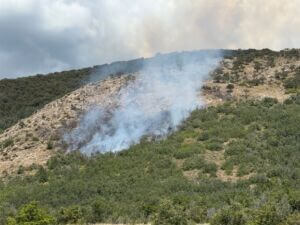 crashed into Durst Mountain in Morgan County, starting a small fire.
crashed into Durst Mountain in Morgan County, starting a small fire.
The pilot's condition is unknown.
The Morgan County Sheriff's Office, at least one helicopter, and at least one fire engine responded to the scene near the Morgan County Airport.
Neighbors said they noticed smoke and, at first, were worried about their homes being in the path of the fire.
"For a little while there, the flames were pretty pronounced and there was a lot of smoke," Brent Bauer, a neighbor, said. "Then they dropped two to three loads of fire retardant on it. Looks like they tamped that out, and I think we are all safe."
As of 6 p.m., resources were still up on the mountain treating hotspots.
https://kutv.com/news/local/glider-crashes-into-durst-mountain-in-morgan-county-starting-hillside-fire
Pilot rescued after making emergency landing in ocean near OKI pier
WWAY News
A plane in the ocean near the OKI pier (Photo: Chip Cavan)
OAK ISLAND, NC (WWAY) — A pilot had to be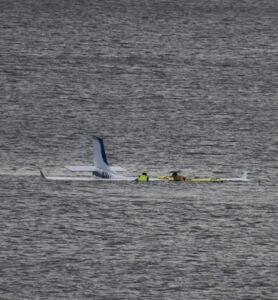 rescued from the ocean following an emergency landing Saturday evening.
rescued from the ocean following an emergency landing Saturday evening.
Officials say a small, single engine aircraft was forced to make an emergency landing in the ocean, near the Oak Island Pier at 705 Ocean Drive just after 7:30 p.m.
The Town’s Beach Safety Unit was already in the area, having responded to a water rescue call nearby, and were able to quickly launch watercraft to assist in retrieving the pilot, who was the only one on board.
Town officials say the pilot was treated on shore for non-life-threatening injuries. The plane was recovered and is being towed out of the water.
Further investigation and response has now been turned over to the Federal Aviation Administration.
https://www.wwaytv3.com/pilot-rescued-after-making-emergency-landing-in-ocean-near-oki-pier/
Small plane makes emergency landing outside of Ruidoso
by: Dave Burge
EL PASO, Texas (KTSM) — A small airplane made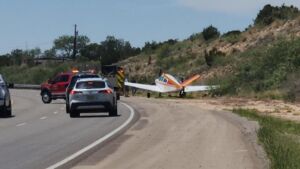 an emergency landing Saturday afternoon, Aug. 2 on U.S. Highway 70, about 20 miles outside of Ruidoso, New Mexico, the Otero County director of emgerency services said.
an emergency landing Saturday afternoon, Aug. 2 on U.S. Highway 70, about 20 miles outside of Ruidoso, New Mexico, the Otero County director of emgerency services said.
A single-engine Beechcraft airplane was experiencing “in-air issues” and was forced to make an emergency landing on Highway 70 near Bent, New Mexico, said Matt Clark, director of emergency services for Otero County.
The plane was leaving Ruidoso and was forced to land near Bent, Clark added.
No one was hurt in the incident and the plane was not damaged, Clark said.
The airplane is on the side of the highway, and U.S. 70 remains open. One lane of traffic is blocked.
The public is urged to stay away from the scene and allow emergency personnnel to do their jobs.
https://www.ktsm.com/news/small-plane-makes-apparent-landing-on-highway-70-near-ruidoso/
NTSB Prelim: Hibbard Rick RANS S7
(Pilot) Was Headed Home When The Engine Popped And Started To Vibrate. He Continued To Run The Engine At Reduced Power
Location: Blackfoot, ID Accident Number: WPR25LA210
Date & Time: July 12, 2025, 20:15 Local Registration: N69TY
Aircraft: Hibbard Rick RANS S7 Injuries: 1 None
Flight Conducted Under: Part 91: General aviation - Personal
On July 12, 2025, about 2015 mountain daylight time, an experimental amateur-built Rans S7 airplane, N69TY, was substantially damaged when it was involved in an accident near Blackfoot, Idaho. The pilot was not injured. The airplane was operated as a Title 14 Code of Federal Regulations Part 91 personal flight.
The pilot reported that after flying for about 45 minutes and completing a 75-mile loop covering his farm property, he was headed home when the engine popped and started to vibrate. He continued to run the engine at reduced power and subsequently observed the oil pressure drop to 0 psi at which time the engine stopped producing power. He initiated a forced landing to a wheat field. During landing the airplane nosed over and sustained substantial damage to the rudder.
During the recovery of the airplane the lower fuselage was covered in oil and the engine crankcase and one of the engines cylinders were damaged.
The pilot reported that at the time of the accident the engine had accrued about 959 hours of operation and 13 hours since the last inspection on March 8, 2025.
The airplane was recovered to a secure location for further examination
FMI: www.ntsb.gov
NTSB Prelim: Vans RV-10
The Airplane Impacted The Ground While In A Steep Nose-Down Pitch Attitude
Location: Capron, IL Accident Number: CEN25FA224
Date & Time: June 28, 2025, 09:34 Local Registration: N847CS
Aircraft: Vans RV-10 Injuries: 2 Fatal
Flight Conducted Under: Part 91: General aviation - Instructional
On June 28, 2025, about 0934 central daylight time, a Vans RV-10 airplane, N847CS, was substantially damaged during an accident near Capron, Illinois. The pilot and flight instructor were fatally injured. The airplane was operated as a Title 14 Code of Federal Regulations (CFR) Part 91 instructional flight.
The purpose of the flight was for the pilot to complete a flight review with the flight instructor. According to automatic dependent surveillance-broadcast (ADS-B) flight data, at 0909:06, the airplane departed runway 23 at Waukegan National Airport (UGN), Waukegan, Illinois. After takeoff, the airplane flew to the west and climbed to about 3,300 ft mean sea level (msl) where the flight track was consistent with maneuvers that are often associated with flight reviews. After the maneuvers, the airplane continued flying to the west until 0931:53, when it entered a right descending turn from about 3,000 ft msl. The airplane completed two 360° turns, over a period of 1 minute 40 seconds, as it continued to descend. Beginning at 0933:33, the airplane briefly flew northwest about 0.3 nautical miles (nm) while it continued to descend. About 13 seconds later, the airplane flew over Capron Road, a north-south road, about 590 ft above ground level (agl) before it entered a right turn to the east and continued to descend. At 0934:03, the airplane crossed over Capron Road for a second time, on an east heading. As of the final ADS-B data return at 0934:05, the airplane was about 315 ft agl and 154 ft west of the accident site. Preliminary aircraft performance calculations indicated that as of the final ADS-B return, the airplane had decelerated to about 54 knots calibrated airspeed (KCAS) and was descending about 2,850 feet per minute (fpm).
There were no witnesses to the accident. The airplane impacted a cornfield on a west heading. The corn damage was generally circular with a diameter consistent with the airplane’s wingspan. Based on the impact crater and the minimal lateral damage to the corn, the airplane impacted the ground while in a steep nose-down pitch attitude.
All structural components and flight control surfaces were located at the accident site. Elevator and aileron flight control continuity could not be confirmed due to impact-related damage; however, all observed separations to the flight control push/pull tubes and rod end bearings were consistent with overstress. Rudder cable continuity was confirmed from the cockpit pedals to the rudder control horn. Each flap remained attached to its respective wing; however, due to impact-related damage the flap setting was not determined during the onsite examination.
Both wing fuel tanks ruptured during impact, but there was evidence of fuel blight observed on the corn leaves surrounding the accident site. The airframe fuel lines were also damaged during impact, but residual fuel was observed at the fuel selector and the fuel line between the engine-driven fuel pump and the fuel servo. The engine-driven fuel pump discharged fuel when operated by hand. The fuel servo’s inlet fuel screen was not contaminated with debris and remained wet with residual fuel. The fuel flow transducer separated from the engine but was otherwise undamaged, and blown air passed through the fuel flow transducer without restriction.
The engine was found partially buried in the impact crater. A visual examination of the engine did not reveal any crankcase or cylinder fractures. Internal engine and valve train continuity was confirmed as the engine crankshaft was rotated through the propeller governor drive gear. The engine rear accessory gear section rotated freely. Compression and suction were noted on all six cylinders in conjunction with crankshaft rotation. An unquantified amount of engine oil remained in sump. The screw-on oil filter was found separated from the rear accessory section. The engine was equipped with two electronic magnetos that were not tested during the onsite examination. The top sparkplugs exhibited features consistent with normal engine operation. The fuel distribution valve and associated fuel injector lines exhibited impact-related damage. The fuel injectors were found attached to their respective fuel injector line, and each fuel injector was found properly installed in its respective cylinder head. The fuel injectors were clear of debris. The fuel servo exhibited significant impact-related damage. The engine examination revealed no evidence of a mechanical malfunction or failure that would have precluded normal operation.
The two-blade propeller remained attached to the engine crankshaft. One of the two propeller blades was found completely buried in the soil; however, when recovered the propeller blade exhibited an S-shaped spanwise bend, chordwise scratches, burnishing, and leading-edge damage. The other propeller blade remained relatively straight and exhibited minor chordwise scratches.
The airplane’s damaged primary flight display (PFD), multifunction display (MFD), electronic attitude indicator, and digital navigation/communication device were shipped to the NTSB Vehicle Recorder Laboratory for examination and possible data extraction. The airplane wreckage was recovered from the accident site to a secure location.
FMI: www.ntsb.gov
NTSB Prelim: Van's Aircraft RV-14
Airplane Impacted A Storage Unit Building About 0.43 Miles From The Approach End Of Runway 12 At 24C
Location: Lowell, MI Accident Number: CEN25FA270
Date & Time: July 21, 2025, 16:27 Local Registration: N21KL
Aircraft: Van's Aircraft RV-14 Injuries: 2 Fatal
Flight Conducted Under: Part 91: General aviation - Personal
On July 21, 2025, about 1627 eastern daylight time, a Van’s Aircraft RV-14A airplane, N21KL, was destroyed when it was involved in an accident near Lowell, Michigan. The pilot and the pilot-rated passenger sustained fatal injuries. The airplane was operated as a Title 14 Code of Federal Regulations Part 91 personal flight.
The purpose of the flight was for the pilot and the passenger to view N471NP (a Van’s Aircraft RV-6 airplane), that was for sale, at the Lowell City Airport (24C), Lowell, Michigan. The passenger was interested in potentially purchasing the airplane. A preliminary review of ADS-B data showed that the pilot departed in the airplane at 1433 from his home base at the Alpena County Regional Airport (APN), Alpena, Michigan. The airplane landed at 1456 at the Oscoda/Wurtsmith Airport (OSC), Oscoda, Michigan, and the passenger boarded the airplane. The airplane departed from OSC at 1532 and flew southwest to 24C, which is a non-towered airport.
Upon approaching 24C, the airplane flew to the west of the Flat River. The ADS-B data showed that as the airplane flew over Lincoln Lake Road, it then turned to the south. Shortly after turning south, the airplane continued in a descending turn toward the east. The airplane impacted a storage unit building about 0.43 miles from the approach end of runway 12 at 24C. When the airplane impacted the storage unit building, an explosion occurred. A postimpact fire consumed the wreckage and the storage unit building. The wreckage was recovered from the accident site, and it was transported to a secure location.
According to a witness, he and his son observed the airplane inflight while they were driving in a vehicle near 24C on Vergennes Street. While the airplane was in the descending turn and prior to impact, they did not observe any smoke or flames emitting from the airplane, nor did they hear any abnormal engine noises such as sputtering or backfiring.
The two-seat experimental airplane was built from a kit in 2024 by the pilot, who in addition to holding a private pilot certificate (airplane single engine land), he also held a repairman certificate (experimental aircraft builder for the accident airplane). The passenger held a private pilot certificate (airplane single engine land) and an airframe and powerplant mechanic certificate.
The airplane was equipped with a Lycoming Engines YIO-390-EXP248 reciprocating engine, part of the Thunderbolt experimental engine series. The airplane was also equipped with a Whirlwind Propellers 300-3B/A-72 three-blade controllable pitch composite propeller. A preliminary review of meteorological data for the accident location and time did not reveal any meteorological areas of concern. The calculated density altitude for the closest meteorological reporting station was 2,266 ft.
FMI: www.ntsb.gov
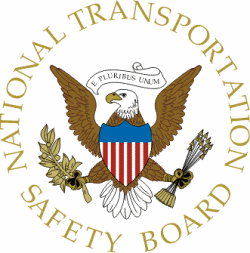
Today in History
46 Years ago today: On 4 August 1979 An Indian Airlines HAL-748 crashed while on approach to Bombay-Santacruz Airport, India , killing all 45 occupants.
| Date: | Saturday 4 August 1979 |
| Time: | 20:16 |
| Type: | Hindustan Aeronautics Ltd. HAL-748-224 Srs. 2 |
| Owner/operator: | Indian Airlines |
| Registration: | VT-DXJ |
| MSN: | 515 |
| Year of manufacture: | 1968 |
| Fatalities: | Fatalities: 45 / Occupants: 45 |
| Other fatalities: | 0 |
| Aircraft damage: | Destroyed, written off |
| Category: | Accident |
| Location: | near Panvel - India |
| Phase: | Approach |
| Nature: | Passenger - Scheduled |
| Departure airport: | Pune-Lohegaon Airport (PNQ/VAPO) |
| Destination airport: | Bombay-Santacruz Airport (BOM/VABB) |
| Confidence Rating: | Accident investigation report completed and information captured |
Narrative:
An Indian Airlines HAL-748 crashed while on approach to Bombay-Santacruz Airport, India , killing all 45 occupants.
The Indian Airlines HAL-748 was operating a scheduled round trip between Bombay and Pune, India. After take-off from Pune, the aircraft established contact with Bombay Radar and transmitted its ETA Bombay. However, the aircraft crashed in the Kiroli Hills about 11 km east of Bombay.
The aircraft was destroyed due to impact and post-impact fire. All persons on board were killed. The accident occurred during night and it was raining at that time
PROBABLE CAUSE: Combination of the following factors:
(1) Momentary/intermittent loss of electrical contact in G/S system of aircraft which gave the pilot an erroneous impression of the interception of the glide slope;
(2) Failure of the pilot to discharge his obligations under DOC 4444 by failing to use the glidepath facility only after the Outer Marker and also in descending below 2910 feet without first cross-checking over the Outer Marker;
(3) Failure of the radar controller to discharge his obligations under DOC 4444 of giving position information to the aircraft from time to time, use of incorrect and/or non-standard phraseology and also failure to inform the aircraft about the loss of radar contact.
